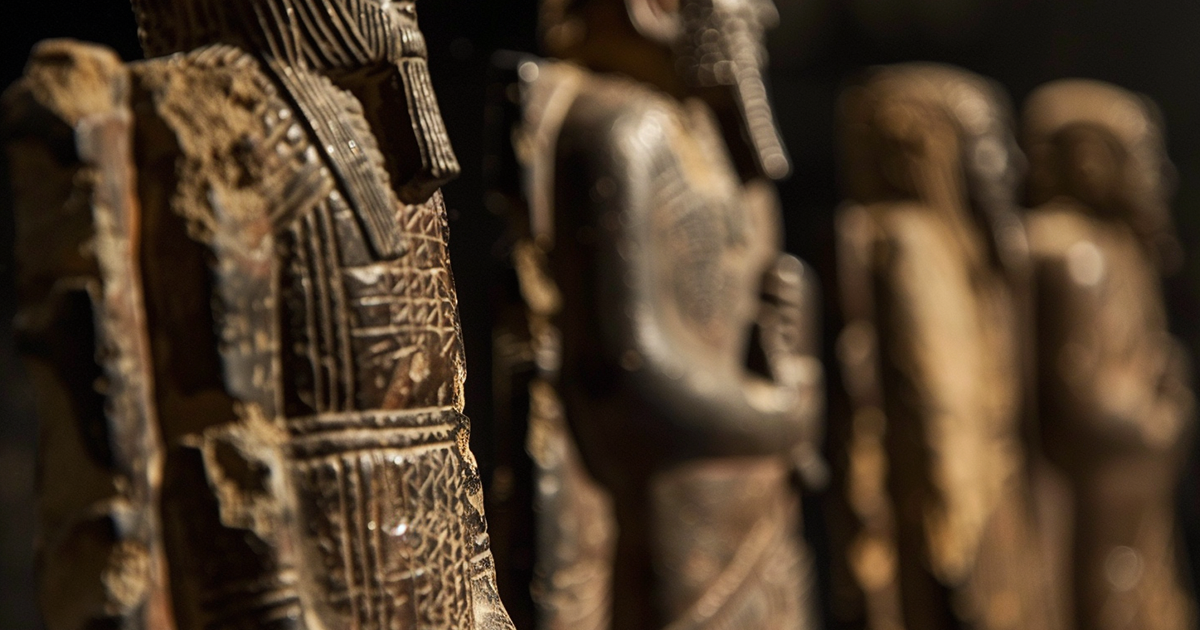Within the vast tapestry of human history, the ancient Sumerians emerge as trailblazers of civilization. Their advancements in writing, mathematics, and governance set the stage for future societies. Yet, nestled amidst their profound cultural legacy lies a riddle that has intrigued scholars and enthusiasts alike – the portrayal of ancient astronauts on Sumerian clay tablets. These mysterious figures, dressed in what seems to be specialized attire, have sparked intense speculation about extraterrestrial encounters. But, do these depictions offer proof of interstellar visitors, or are they merely symbolic representations rooted in human mythology?
The unearthing of Sumerian clay tablets traces back to the 19th century, when archaeologists excavated the remnants of ancient Mesopotamia, present-day Iraq. Among these artifacts were numerous inscribed clay tablets that shed light on Sumerian society, spirituality, and narrative. Among these tablets are depictions of human-like entities attired in what can only be described as unconventional garb – outfits reminiscent of contemporary spacesuits.
Advocates of the ancient astronaut hypothesis argue that these portrayals serve as evidence of extraterrestrial beings who shared advanced insights with the Sumerians. They highlight the intricate details of the attire, drawing parallels to contemporary astronaut gear such as helmets, gloves, and even what seems to be oxygen apparatus. According to this viewpoint, the Sumerians’ proficiency in astronomy, mathematics, and engineering could be traced back to interactions with these alien entities.

Supporters of this concept also reference Sumerian texts like the Epic of Gilgamesh, containing tales of gods descending from the skies in flying contraptions. They argue that these accounts remarkably resemble modern spacecraft, hinting that the Sumerians could have witnessed technological marvels beyond their era.
Nevertheless, skeptics urge caution in jumping to extraterrestrial conclusions. They propose that the depictions on the clay tablets might symbolize deities or mythological characters rather than literal illustrations of aliens. In ancient Mesopotamian belief, gods and goddesses frequently took human-like forms, blurring the distinctions between mortal and divine. Hence, the figures on the tablets could be construed as representations of these mythical beings instead of actual extraterrestrial visitors.
Moreover, critics emphasize that analyzing ancient relics through contemporary lenses risks imposing modern biases and assumptions onto past societies. Without concrete corroborative evidence such as remnants of advanced technology or direct mentions of alien interactions, the ancient astronaut theory remains speculative in nature.
In response to these critiques, proponents of the ancient astronaut idea highlight other ancient cultures with similar depictions of humanoid beings in advanced attire. From Egyptian rulers to the Nazca lines in Peru, they argue for a global occurrence of ancient civilizations portraying encounters with beings from beyond Earth.
However, amidst speculative theories, there exist different levels of credibility. While some interpretations of ancient artifacts may push plausibility boundaries, others offer nuanced perspectives. Rather than proposing direct alien contact, some scholars suggest that these depictions symbolize human yearnings for exploration and transcendence. In this context, the figures on the clay tablets embody humanity’s inherent curiosity about the universe and our aspirations to surpass terrestrial limitations.
Ultimately, the discourse on Sumerian clay tablets and the depiction of ancient astronauts highlights the challenges of interpreting ancient artifacts and the inherent restrictions of our comprehension. While the temptation to unveil definitive answers to age-old enigmas persists, the truth may linger in the expansive realm between skepticism and speculation.
As we persist in deciphering the enigmas of yore, it is crucial to approach ancient artifacts with humility and an open mentality. Whether the depictions on Sumerian clay tablets genuinely represent encounters with extraterrestrial beings or merely reflect the diverse tapestry of human mythology, one certainty endures – the pursuit of knowledge and insight transcends temporal and spatial confines, guiding us on an exploration voyage that spans through the ages.
